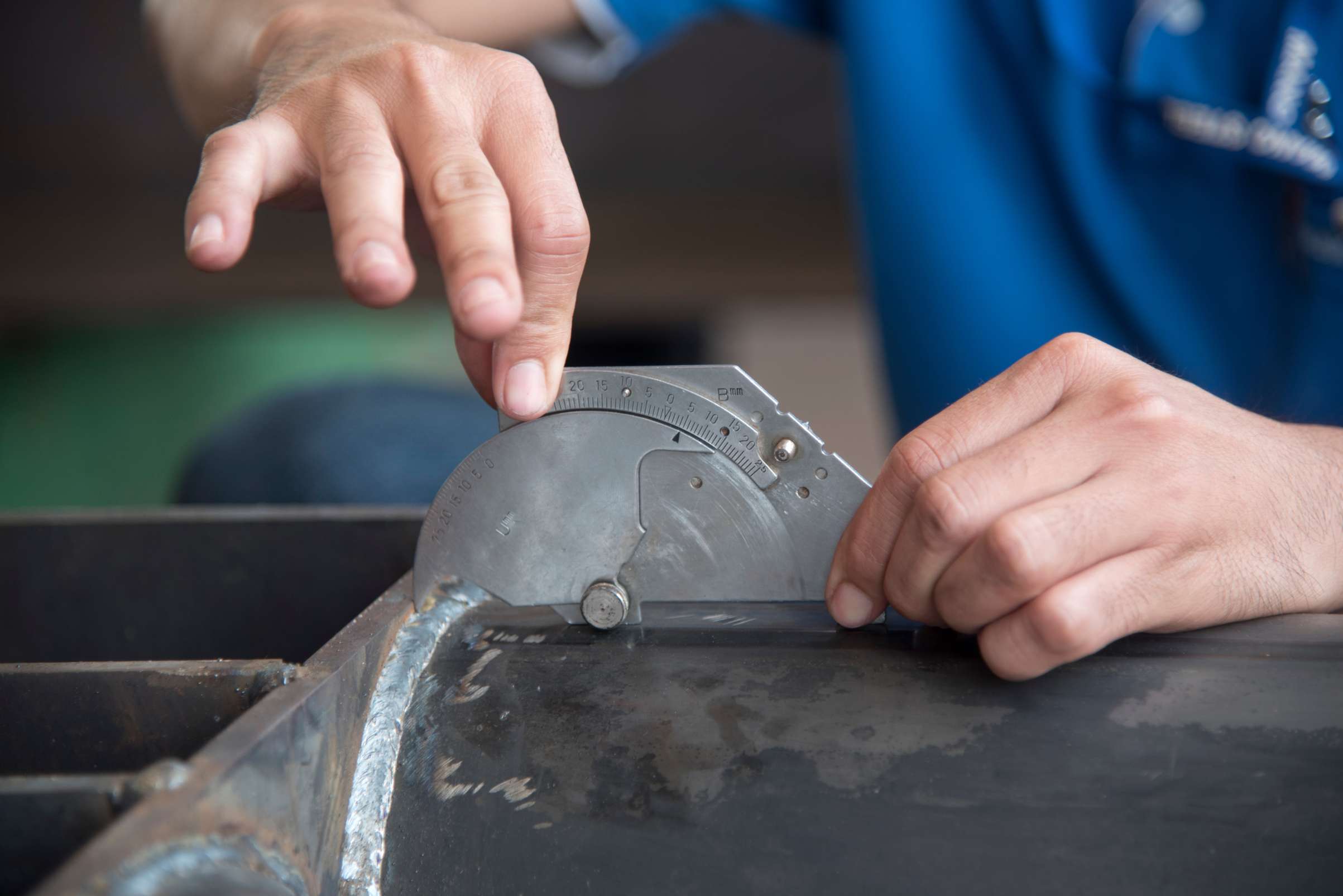Understanding the Fundamentals of Pipeline Welding Assessment: Important Aspects for Reviewing Weld Top Quality and Preventing Failings
In the realm of pipe welding inspection, the stakes are undoubtedly high, requiring a thorough understanding of fundamental concepts to make sure weld high quality and mitigate failure dangers. Different crucial elements come into play, including the choice of suitable materials, the application of advanced examination methods, and the recognition of widespread welding problems. Additionally, adherence to regulatory requirements plays a pivotal duty in preserving system stability. Yet, the complexities intrinsic in these procedures raise important questions about best methods and arising modern technologies that can redefine inspection methods-- concerns that warrant more expedition.
Importance of Weld Quality
The stability of a pipeline is essentially reliant on the high quality of its welds, making weld top quality a crucial variable in guaranteeing effective and risk-free operation. A pipe weld acts as a joint point where products are joined, and any type of deficiencies around can cause considerable architectural weaknesses. Poor weld top quality can cause leaks, ruptures, and disastrous failings, posing major safety and security risks and ecological dangers.
Numerous factors contribute to the quality of a weld, consisting of the selection of welding process, the skills of the welder, and the conditions under which the welding is carried out - Pipeline Welding Inspection. Insufficient prep work, inappropriate warm input, and contamination can endanger weld integrity, resulting in issues such as porosity, insufficient fusion, or splits. As a result, rigid top quality control procedures have to be executed throughout the welding process to mitigate these risks
Furthermore, the long-lasting efficiency of a pipeline is heavily influenced by the toughness of its welds. Premium welds not only boost the general toughness of the pipe yet likewise expand its life span, lowering the need for costly repairs and downtime. For this reason, ensuring premium weld top quality is extremely important in pipeline style and upkeep practices.
Secret Inspection Methods
Guaranteeing weld top quality demands the execution of effective inspection techniques to determine potential defects before they result in failures. Pipeline Welding Inspection. Amongst the most extensively utilized methods are aesthetic evaluation, radiographic screening (RT), ultrasonic screening (UT), and magnetic particle testing (MT) Each method serves a distinct purpose and is selected based on the certain requirements of the pipeline task
Aesthetic examination is the initial line of protection, allowing examiners to assess surface problems, positioning, and overall handiwork. Radiographic testing supplies a detailed view of inner weld honesty by utilizing X-rays or gamma rays to find subsurface imperfections.
Ultrasonic testing employs high-frequency acoustic waves to assess the thickness and stability of welds, making it perfect for discovering internal interruptions. Magnetic bit screening is a reputable method for determining surface area and near-surface issues on ferromagnetic products by using magnetic areas and great ferrous particles. By using these essential inspection methods, pipeline welding inspectors can ensure the finest requirements are kept, inevitably resulting in more secure and extra reliable pipe systems.
Typical Welding Flaws
Amongst the most widespread defects are porosity, which happens when gas allures in the weld steel, producing gaps that damage the joint. Another significant problem is absence of fusion, where the weld metal does not sufficiently bond with the base product, endangering the joint's stamina.

Cracks are additionally an essential issue, materializing in different types such as warm cracks, chilly cracks, and origin fractures. Each kind positions special difficulties and requires specific evaluation methods for discovery. Undercut is another issue that can minimize the weld's cross-sectional location, leading to anxiety focus points, while slag incorporation takes place when non-metallic product becomes caught in the weld pool, adversely affecting the mechanical residential or commercial properties of the weld.
Furthermore, inaccurate grain shape can bring about irregular anxiety distribution. Identifying these common issues is crucial for welders and examiners alike, as early detection and correction are vital to ensuring the Recommended Reading durability and integrity of pipeline systems.

Products and Their Impact
Picking click this link the ideal products for pipe welding substantially influences the general performance and reliability of the bonded joints. The selection of base metals, filler products, and coverings plays a critical role in figuring out the strength, deterioration resistance, and resilience of the welds. As an example, carbon steel is frequently utilized for its equilibrium of strength and expense, however it might be susceptible to corrosion in particular atmospheres, necessitating making use of corrosion-resistant alloys or protective coverings.
Furthermore, dissimilar steel welding needs cautious consideration of thermal growth buildings and possible galvanic corrosion. The compatibility of materials can considerably influence the microstructure of the weld, bring about variants in mechanical buildings. For example, stainless steel provides outstanding corrosion resistance however may need specific filler materials to make sure a sound weld joint.
Furthermore, the effect of temperature level and ecological problems on material selection can not be underestimated. High-strength steels might shed ductility at elevated temperatures, while low-temperature applications could require materials with improved sturdiness. Ultimately, comprehending the effects of material options is important for achieving ideal weld top quality and avoiding failures in pipe systems.

Regulative Criteria and Compliance
Governing criteria and compliance play a critical role in pipe welding, establishing the structure within which secure and reliable techniques are preserved. These requirements are established by numerous companies, including the American Culture of Mechanical Designers (ASME), the American Welding Culture (AWS), and the Pipe and Hazardous Products Safety And Security Management (PHMSA) Complying with these laws makes certain that welding treatments satisfy the needed high quality and security criteria.
Compliance with governing criteria is vital not just for making sure the integrity of the welds but additionally for securing the setting and public safety and security. Examiners are tasked with validating that welding procedures adhere to these standards with strenuous evaluations of both the processes and the last welds. This includes evaluating welder qualifications, welding treatments, and the materials used.
Failure to comply with well-known policies can lead to considerable repercussions, consisting of pricey repairs, lawful responsibilities, and disastrous failings. Consequently, organizations have to integrate compliance right into their functional techniques, cultivating a culture of security and high quality. Regular training and audits are critical parts in preserving adherence to these regulatory criteria, ensuring that all workers are educated and equipped to copyright the greatest degrees of pipeline welding high quality.
Verdict
To conclude, a comprehensive understanding of pipeline welding inspection is essential discover here for ensuring weld top quality and preventing failings. By using essential examination techniques and acknowledging typical welding defects, inspectors can effectively examine the integrity of welds. Factor to consider of product choice and adherence to governing requirements even more boost the reliability and safety and security of pipeline systems. Inevitably, these practices add to the prevention of leakages and catastrophic failings, underscoring the critical value of strenuous inspection processes in pipe construction and upkeep.
In the realm of pipeline welding examination, the stakes are without a doubt high, requiring a thorough understanding of basic concepts to guarantee weld quality and alleviate failing risks (Pipeline Welding Inspection).The stability of a pipe is basically dependent on the quality of its welds, making weld high quality a vital variable in making sure efficient and risk-free procedure.Several aspects add to the high quality of a weld, consisting of the selection of welding process, the skills of the welder, and the conditions under which the welding is executed. Undercut is another problem that can minimize the weld's cross-sectional area, leading to anxiety focus points, while slag addition occurs when non-metallic material comes to be entraped in the weld swimming pool, negatively impacting the mechanical buildings of the weld
In verdict, a detailed understanding of pipe welding assessment is vital for making sure weld high quality and preventing failings.